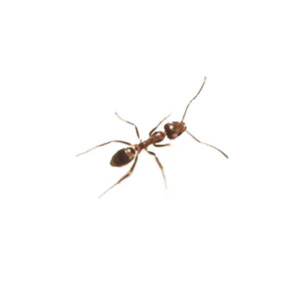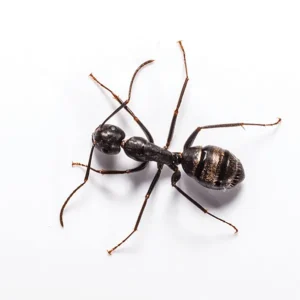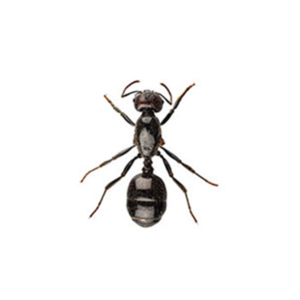Ghost Ant Identification
Ghost ants are a tropical and subtropical species and are a very common ant species in North Carolina. They can be found in temperate climates and generally inside buildings and structures. Colonies of ghost ants may be moderate to large in size (100 to 1000 individuals) with numerous queens. Ghost ants also excrete a distinct coconut smell when crushed. The ant is easy to recognize due to its dark head, light body, and small size. Foragers are seen in kitchens and bathroom sinks, counters, and floors.
What Do Ghost Ants Look Like?
Ghost ants, known for their elusive nature, are small and pale, making them hard to spot. They measure about 1.3 to 1.5 mm in length and have a distinctive pale coloration, with a darker head and thorax and a translucent or whitish abdomen and legs.
Signs of a Ghost Ant Infestation
Indicators of a ghost ant infestation include seeing these tiny pale ants trailing along kitchen counters, in bathrooms, or along walls. Their preference for sweet substances often leads them to food sources within homes.
Habitat, Diet, Life Cycle & Bites
Where Do Ghost Ants Live?
Ghost ants live in humid habitats and nests are found in soil, rotten wood, under bark, within leaf litter, and inside plant cavities. Inside homes, they nest in potted plants, bread boxes, shower curtain rods, behind baseboards, and between cabinets. Ghost ants enter through cracks around windows, doors, and soffits. Outside, their nests are located in the soil next to foundations, porches, shrubs, and trees. The hollow framing of pool enclosures is also a favorite nesting site. These pests will also gain entry into structures from surrounding vegetation.
Diet of Ghost Ants
Their diet mainly consists of sweets, including sugar, honey, and syrups. They are also known to feed on insects and can adapt their diet based on available food sources.
Life Cycle of Ghost Ants
Like many ant species, ghost ants go through the four stages of development: egg, larva, pupa, and adult. Colonies can grow rapidly, with multiple queens contributing to the population.
Ghost Ant Bites
The ghost ant does not sting and only bites when threatened. Their bites are rare and not harmful, causing little to no discomfort to humans.
Are Ghost Ants Dangerous?
While ghost ants are not dangerous in terms of health risks, they can be a nuisance in homes. Their foraging can contaminate food, and their presence can be bothersome. Indoors, activity is typically concentrated in the kitchen, although any room can be infested. These ants can be a frustrating pest when found by homeowners trailing from room to room under the edge of carpeting. In kitchens, they prefer to forage on sweets, but will also feed on grease. They tend homopterans (a sucking insect) for honeydew and feed on both live and dead insects. Since ghost ants need moisture, they often trail to shower stalls, bathtubs, sinks, and toilets. If you suspect a ghost ant infestation, it is best to consult a licensed ant exterminator
How to Get Rid of Ghost Ants?
Eradicating ghost ants involves eliminating their food sources and nesting sites. Cleaning up food spills, sealing food containers, and addressing moisture problems are key steps. In cases of large infestations, baits and insecticides may be required.
Ghost Ant Prevention Tips
Prevent ghost ants by maintaining a clean and tidy home environment. Store food in airtight containers, fix leaks, and seal entry points around your home to deter these ants.
Need help with Ghost Ants control?
FAQs
What is the Best Product to Kill Ghost Ants?
The best products for killing ghost ants are usually ant baits that they carry back to the nest, affecting the entire colony. The effectiveness of specific DIY products can vary, so it’s best to reach out to the experts at Bug Out to solve your ant infestation!
What Attracts Ghost Ants in the House?
Ghost ants are often attracted to houses by the availability of sweet foods and moisture. They are drawn to spills, exposed food, and damp areas.
Why Do Ghost Ants Keep Coming Back?
Ghost ants may keep coming back if their food sources and entry points are not adequately addressed. Persistent moisture problems and unchecked food spills can lead to recurring infestations.





